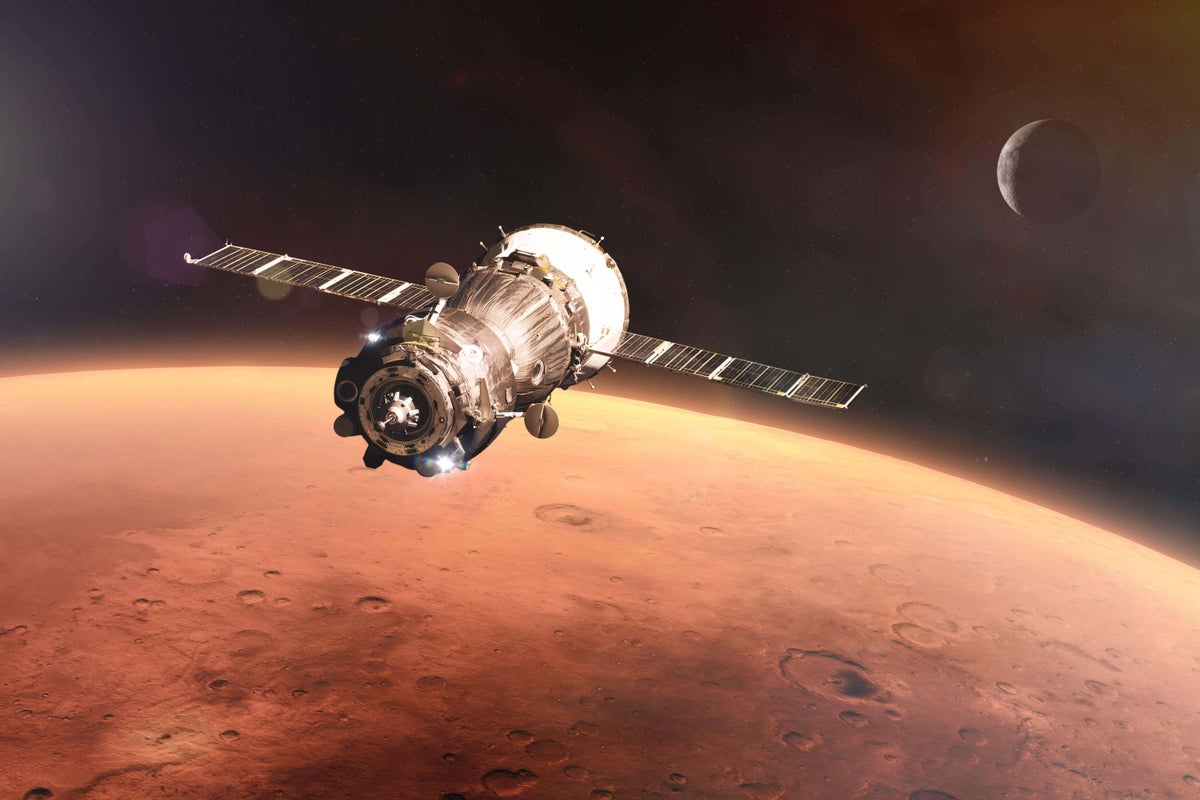Science
NASA Unveils New Findings Suggesting Past Life on Mars

NASA has recently disclosed significant findings from Mars that may provide crucial insights into the planet’s potential for past life. Scientists have identified unique mineral patterns in clay-rich rocks located at the edge of Jezero Crater, an area once nourished by ancient river systems. This crater is also the exploration site of the NASA Perseverance Rover. Dubbed “leopard spot” patterns, these mineral formations bear resemblance to those produced by microorganisms on Earth, igniting renewed interest in the possibility that life may have once existed on Mars.
While these findings are promising, experts caution that definitive proof of life remains elusive. Researchers emphasize the need for a multitude of evidence to confirm whether these mineral patterns are indeed indicators of past microbial activity. The conversation surrounding the existence of life on Mars has gained momentum, especially considering that certain Martian environments may still be capable of supporting life today.
Comparative Environments: Mars and Early Earth
Historically, early Mars and Earth exhibited similar conditions, both featuring atmospheres and magnetic fields that protected them from harmful solar radiation, alongside abundant surface water. These factors were conducive to the emergence of life on Earth, raising the question of whether similar processes could have occurred on Mars.
As Earth’s life began to flourish, Mars underwent a dramatic transformation. The loss of its magnetic field, due to a cooling core, exposed the planet to harsh solar radiation, leading to atmospheric erosion. Consequently, the Martian landscape evolved into the cold, arid environment observed today, which many scientists consider too hostile for life. Current hypotheses suggest that any surviving organisms would likely be found in more sheltered locations, such as underground or within icy regions.
Potential habitats for Martian microbial life include caves, beneath polar ice sheets, or deep underground. These environments have Earth analogues that host microorganisms, making the notion that life could persist in these extreme niches plausible. The Martian subsurface is particularly intriguing, extending from a few metres to several kilometres deep, where more stable conditions may exist compared to the inhospitable surface.
Exploring Mars’ Subsurface: A New Frontier
On Earth, a significant portion of microbial life thrives beneath the surface, surviving in rock fissures. These ecosystems are primarily composed of lithoautotrophs, microbes that derive energy from inorganic materials. Notably, methane—often associated with biological processes—has been detected on Mars, although its presence does not definitively indicate life, as it can also arise from abiotic processes.
The potential for a Martian deep biosphere relies on several factors, including the availability of liquid water, energy sources, appropriate living conditions, and suitable temperatures. Evidence suggesting the existence of liquid water below Mars’ surface remains a topic of debate; if confirmed, this could facilitate chemical reactions that sustain microbial life.
Compared to Earth, the Martian subsurface might retain more porosity due to lower gravitational compression, providing microbes with necessary living space. Additionally, Mars’ interior generates less heat, allowing life-sustaining temperatures to extend deeper underground than on Earth.
To further investigate these possibilities, scientists examine Earth’s extreme environments—referred to as Mars analogues—to comprehend how life might survive on the Red Planet. Locations such as the Atacama Desert in South America, sediments in Lake Salda in Turkey, and salts found in Utah’s Pilot Valley are being studied to understand microbial resilience under Martian-like conditions.
In controlled laboratory settings, researchers utilize specialized chambers that simulate Martian atmospheric conditions, radiation levels, and temperatures. These experiments are crucial for assessing the potential for life on Mars.
Currently, there is no conclusive evidence of past or present life on Mars. The “leopard spots” discovered by NASA represent the most promising signs thus far, but remain inconclusive. If life exists today, it is likely not widespread; robotic missions have yet to detect it.
Looking ahead, the upcoming European Space Agency (ESA) mission, featuring the ExoMars Rosalind Franklin rover, is set to drill up to two metres below the Martian surface. This mission presents an opportunity to examine the shallow subsurface, which may harbor living microorganisms. However, many scientists acknowledge that deeper exploration will be necessary for a comprehensive understanding of Mars’ potential for life.
As researchers continue to grapple with the challenges of probing the Martian subsurface, the search for life on Mars remains a tantalizing frontier in planetary science. The quest not only seeks to answer profound questions about our neighboring planet but also aims to shed light on the broader understanding of life in the universe.
-

 Health3 months ago
Health3 months agoNeurologist Warns Excessive Use of Supplements Can Harm Brain
-

 Health3 months ago
Health3 months agoFiona Phillips’ Husband Shares Heartfelt Update on Her Alzheimer’s Journey
-

 Science2 months ago
Science2 months agoBrian Cox Addresses Claims of Alien Probe in 3I/ATLAS Discovery
-

 Science2 months ago
Science2 months agoNASA Investigates Unusual Comet 3I/ATLAS; New Findings Emerge
-

 Science1 month ago
Science1 month agoScientists Examine 3I/ATLAS: Alien Artifact or Cosmic Oddity?
-

 Entertainment5 months ago
Entertainment5 months agoKerry Katona Discusses Future Baby Plans and Brian McFadden’s Wedding
-

 Science1 month ago
Science1 month agoNASA Investigates Speedy Object 3I/ATLAS, Sparking Speculation
-

 Entertainment4 months ago
Entertainment4 months agoEmmerdale Faces Tension as Dylan and April’s Lives Hang in the Balance
-

 World3 months ago
World3 months agoCole Palmer’s Cryptic Message to Kobbie Mainoo Following Loan Talks
-

 Science1 month ago
Science1 month agoNASA Scientists Explore Origins of 3I/ATLAS, a Fast-Moving Visitor
-

 Entertainment2 months ago
Entertainment2 months agoLewis Cope Addresses Accusations of Dance Training Advantage
-

 Entertainment3 months ago
Entertainment3 months agoMajor Cast Changes at Coronation Street: Exits and Returns in 2025









